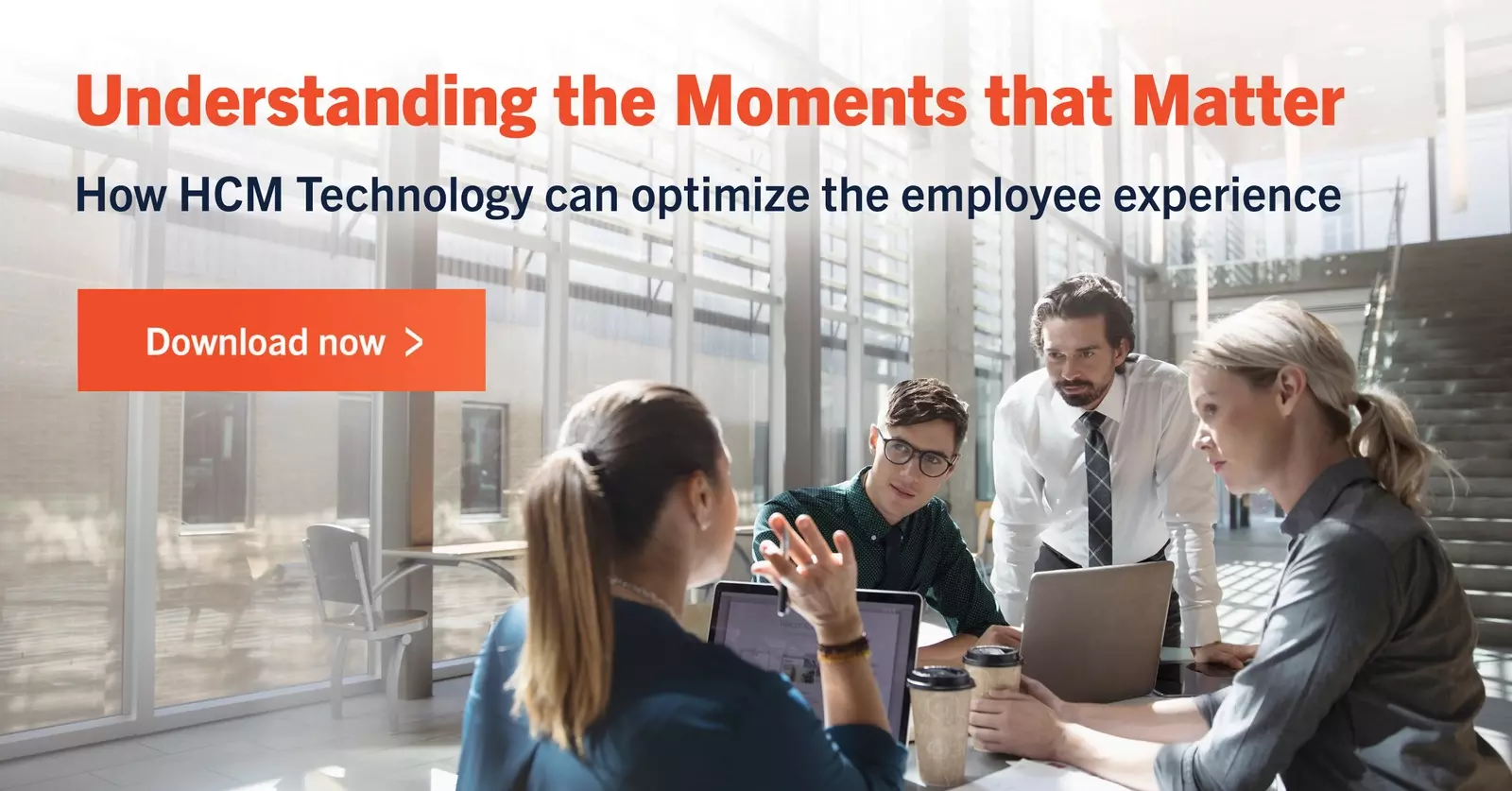If we take a moment to reflect, it may seem that there’s an abundance of division in our society right now. While this may be true in some senses, though, what’s important to remember is that while we all have differences, there is more that unites us than divides us. Sometimes, we just need to look for that common ground, and we need to ensure that we look for opportunities to learn about others and ultimately about ourselves.
Turbulent times are nothing new and we've overcome great challenges throughout history, but at the moment it feels like we're going through more change and more division than any other time in recent memory. These changes aren’t likely to end anytime soon, and the impacts will continue to affect every aspect of our lives not only personally, but also in the workplace – and that means we need to adapt our HR processes to unite our people now more than ever if we want our organizations to succeed. So how do we do that?
I’ve spent over 10 years working on various diversity, equity, and inclusion (DE&I) strategic initiatives around the world, and from a very early stage in my career I learned how essential it is to actively listen and understand what communities need and what they’re experiencing, and that there’s not always a one-size-fits-all solution. This is especially true when it comes to the workplace, where there can be many complexities in organizations that may cause employees to feel that they’re not able to bring their true and authentic selves to work.
So if there isn't a magic bullet, what can HR do on a practical level to help resolve this issue? Let’s talk about one great potential starting point that can help your people feel they belong and also give you insights into which elements of their work experience matter most to them – employee resource groups (ERGs).

What is an employee resource group?
One way for organizations to create community building opportunities at work is through implementing ERGs in their overall DE&I organizational strategy. These groups are also known by various other names, such as affinity groups, business resource groups, and diversity networks. By any name, though, ERGs are a powerful tool employers can use as part of diversity and inclusion initiatives to help foster a sense of belonging, especially when there is organizational and leadership support.
The large body of research that's been done about the benefits of diversity and inclusion initiatives (and more recently belonging) in the workplace shows that employees perform their best when they feel they belong and are valued. In fact, a recent study by BetterUp indicates a strong sense of belonging was linked to a 56 percent increase in job performance, a 50 percent drop in turnover risk, and a 75 percent reduction in sick days. It's also an emerging trend that employees who feel valued are also more willing to recommend their employer to others and are more likely to receive promotions and raises. So beyond just doing what's right for your people, ERGs and other DE&I strategies also have measurable positive business impacts.
ERGs are more than just a beneficial rallying point for driving company DE&I efforts forward. They also can be a safe space for individuals with similar identity characteristics to gather, socialize and discuss relevant issues. Sometimes, ERGs are created to celebrate a community and in other cases they may form to help foster organizational change. ERGs provide opportunities for people to connect with peers from their identity group and can empower others to share feedback and recommendations with influential organizational decision makers.
Here are some important things I've learned about helping organizations build successful ERGs to get you started if you're considering them.
1. Be intentional about creating time for ERGs
I have seen groups from dominant or more represented identities (such as those in leadership positions) want to shape and form ERG agendas or dictate outcomes into what they perceive to be successful. In the ERG groups I have participated in as a member, most members clearly understand the role and purpose of the group, and the majority usually have time to step away from their roles to participate. However, I have also been part of organizations where I have supported the creation of various ERGs, such as for non-English speakers or those from different diverse cultures, for employees who aren't able to step away from their roles.
This situation is especially common within specific industries, such as retail, manufacturing, hospitality, or food services, where some members of ERGs such as hourly team members may have limited time to step away from their job duties and participate in work events. And it's extra critical that people in these roles get the chance to be a part of ERGs, as oftentimes they are rarely represented in the workplace, are the lowest paid, are typically employees of color, and may have other barriers that limit their advancement in organizations.
This is just one example to show how not all ERGs can function the same, and how sometimes we must think of different inclusive ways that can help bring together the employees who the ERG is designed to serve. For instance, if you're on an HR team for a company with a high population of hourly employees, you might consider doing pulse surveys to gather their feelings on how ERGs could best be implemented, or coordinating schedules to provide a break where the majority of people interested in an ERG could attend.
2. Get leadership investment from the start
One pillar of successful DE&I initiatives is that leadership must invest in the endeavor from the beginning, especially if the organization is just starting to implement programs such as ERGs. The relationship of the manager and the employee is also critical in order to help employees be able to participate in these types of programs. It's important for leaders to empower and support ERGs by giving the group the autonomy to define their mission, set clear goals to promote engagement, and define what success means to them.
As a quick example, in one experience I noticed that a group felt they would face consequences for missing work to attend an ERG meeting. For that reason, I decided to invite the director of the department (after consulting with the group and providing guidance to the director) to participate in the next ERG event. During the meeting, I witnessed the director move away from ‘leading’ to allowing the group to carry out their own meeting agenda. This opened an entire next level of trust and support for both leadership and the ERG. Employees then began to feel more empowered to share, identify, and address concerns within the organization. More importantly, this helped to amplify the voices of those who traditionally did not have a seat at decision making tables.
One way HR can help leadership, especially executive-level leadership, understand their role in the ERG process is through some concrete metrics pulled from your regular people analytics efforts. If you can illustrate how their support of DE&I initiatives will not only make a difference for their people but also improve business continuity, contribute to successful HR strategy, and lead to business goals being met, it will help even skeptical leaders get on board.
3. Keep intersectionality in mind
There's another factor that HR must consider when forming ERGs: intersectionality. Kimberlé Crenshaw, a law professor and scholar of critical race theory, first coined the term intersectionality to describe how different backgrounds encounter the world and how they can overlap to either privilege or marginalize the people who come from them. Given today’s political climate and increasingly globalized workforce, it's important to keep in mind how intersectional identities and experiences play a role in creating an inclusive and sustainable ERG.
For example, a Generation X, biracial, parent, female, and queer identified individual may feel boxed into only being able to be part of one ERG. Ensuring that individuals are given the opportunity to define their own identities within specific or different groups helps to move beyond diversity into spaces of inclusion. A possible way to help relieve the pressure your people might feel around not being able to participate in all the ERG opportunities they relate to is to create a collaborative community around your ERGs. For instance, encourage ERGs to hold meet-and-greets with one another or give the leaders of your different ERGs the space to compare notes and agendas. This can help give your teams the chance to get even more value out of the ERG ecosystem at your organization.
Conclusion: The strongest ERGs are led from within
Through the experiences I've mentioned above, along with many others, I've learned how powerful ERG communities can be when they are led from within. They can increase a sense of belonging and can serve as a catalyst to advance employees in the workplace. Employees are also able to feel more connected and included in organizational culture, because groups can identify their own advancement needs and tie them to overall business priorities with the support from leadership.
Establishing ERGs is just one part of creating a successful DE&I company strategy to increase employee engagement and foster inclusion. By understanding different perspectives and representations in the workplace, companies can also better understand their own diverse customer needs in a time where representation matters more than ever.



